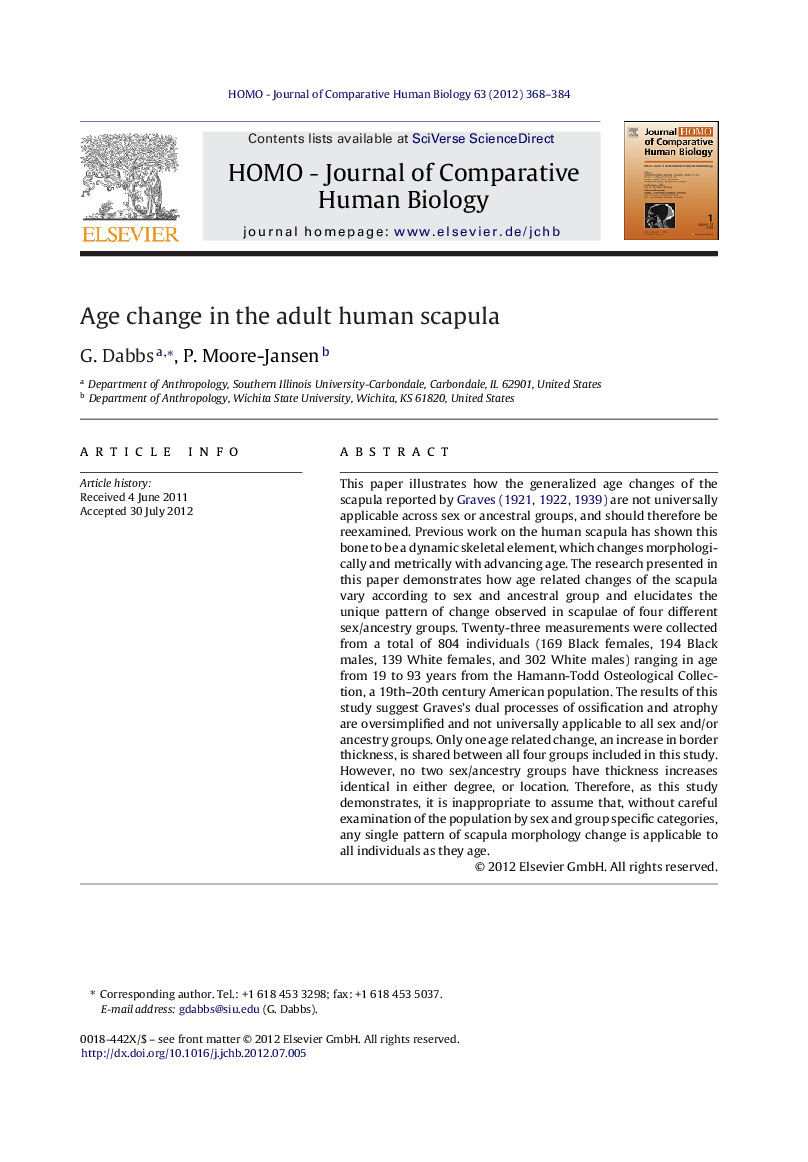| Article ID | Journal | Published Year | Pages | File Type |
|---|---|---|---|---|
| 100236 | HOMO - Journal of Comparative Human Biology | 2012 | 17 Pages |
This paper illustrates how the generalized age changes of the scapula reported by Graves, 1921, Graves, 1922 and Graves, 1939 are not universally applicable across sex or ancestral groups, and should therefore be reexamined. Previous work on the human scapula has shown this bone to be a dynamic skeletal element, which changes morphologically and metrically with advancing age. The research presented in this paper demonstrates how age related changes of the scapula vary according to sex and ancestral group and elucidates the unique pattern of change observed in scapulae of four different sex/ancestry groups. Twenty-three measurements were collected from a total of 804 individuals (169 Black females, 194 Black males, 139 White females, and 302 White males) ranging in age from 19 to 93 years from the Hamann-Todd Osteological Collection, a 19th–20th century American population. The results of this study suggest Graves's dual processes of ossification and atrophy are oversimplified and not universally applicable to all sex and/or ancestry groups. Only one age related change, an increase in border thickness, is shared between all four groups included in this study. However, no two sex/ancestry groups have thickness increases identical in either degree, or location. Therefore, as this study demonstrates, it is inappropriate to assume that, without careful examination of the population by sex and group specific categories, any single pattern of scapula morphology change is applicable to all individuals as they age.
